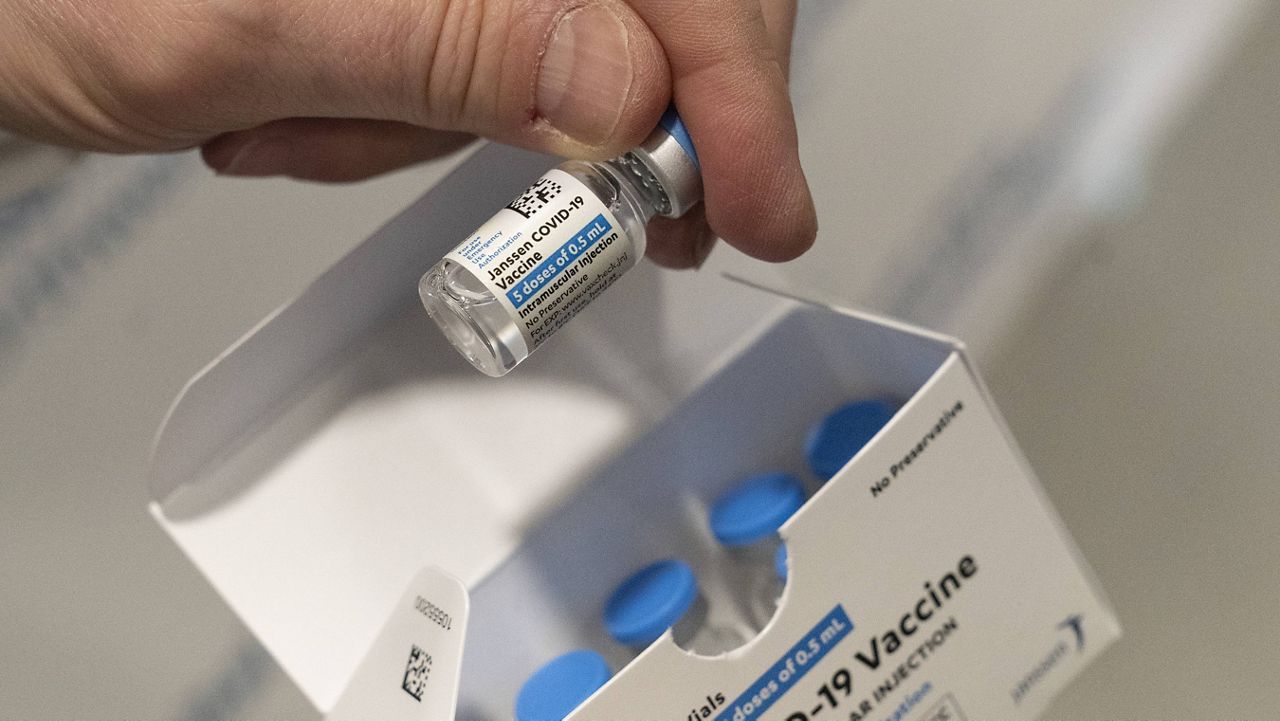Federal health officials lifted a pause in use of Johnson & Johnson's COVID-19 vaccine on Friday, allowing use of the single-shot inoculation to be administered once more just hours after an advisory panel declared that the benefits outweighed the risks.
A Centers for Disease Control and Prevention (CDC) panel recommended earlier Friday to lift the pause on the Johnson & Johnson vaccine, voting instead to rely on a new product label with a warning for adult women under 50, after rare cases of blood clots were reported in a handful of people who got the shot.
Federal health officials determined that the J&J immunization is critical to fight the pandemic at this crucial point in the United States' vaccination effort, and that the clot risk could be handled with warnings.
"This is not a decision the agencies reached lightly," Dr. Janet Woodcock, the acting FDA Commissioner, said late Friday.
Dr. Rochelle Walensky, the Director of the CDC, said that the pause shows "that we are taking every one of those needles in a haystack that we find seriously."
The independent advisory panel — the Advisory Committee on Immunization Practices (ACIP) — decided that the benefits of the Johnson & Johnson vaccine in preventing COVID-19 outweighed the risks, and they voted 10-4 to continue recommending the shot for people 18 years and older.
They took into account a new Johnson & Johnson label that uses language agreed on with the Food and Drug Administration and that comes along with new fact sheets for doctors and patients.
Dr. Paul Stoffels, chief scientific officer of Johnson & Johnson, promised that the company would work with both U.S. and authorities worldwide "to ensure this very rare event can be identified early and treated effectively."
It includes information about the symptoms of thrombosis with thrombocytopenia syndrome (TTS), an unusual kind of blood clot, plus treatment recommendations.
Some members of the panel raised concerns about whether the FDA label would be informative enough for women who may be at risk of TTS.
“I am concerned that the consumers — and women in this age group in particular — will not be adequately informed just by the FDA,” said Dr. Bell, a panel member who was part of the working group that conducted a risk-benefit analysis of the vaccine. “So we really are depending on the public health agencies and the partner organizations to make sure that people actually are informed and are empowered.”
The CDC has learned of 15 blood clot cases connected to the vaccine, the agency’s Dr. Tom Shimabukuro said Friday. Of the 15, all have been women, and 13 were under the age of 50. Three have died and seven were hospitalized.
However, panel members were also quick to highlight the overwhelming benefit of the Johnson & Johnson shot for its effectiveness in preventing COVID-19. They called for clear guidance along with the new label so that it does not discourage people from getting vaccinated.
“While that information is being provided, it is essential that people are also provided with the overwhelming benefits,” said Dr. Robert Gluckman, who represented America’s Health Insurance Plans at the meeting.
“Any contribution to vaccine hesitancy is far more likely to cause real harm to people,” he added.
There are nearly 10 million doses of the J&J vaccine that have been distributed but not yet administered. The U.S. government has purchased 100 million total doses of the shot.
Data from the Centers for Disease Control and Prevention (CDC) show the seven-day average for daily vaccinations fell each day from April 12 to 17, potentially indicating a slight decline in demand now that more people are vaccinated. The only other dip since COVID-19 vaccines hit the market was recorded in February, when winter storms forced vaccination sites to close and shipments to be delayed.
As of Friday, at least 135 million Americans have received at least one dose of a COVID-19 vaccine, with nearly 90 million people fully vaccinated, according to the CDC.
The Biden administration has been working to combat vaccine hesitancy since President Joe Biden took office. On Wednesday, Biden called on companies to give employees paid time off to get vaccinated or recover from side effects, and announced a tax credit for small and medium-size businesses that do so.
The administration is also working to ensure that 90% of Americans live within 5 miles of a vaccination site as well as calling on businesses, celebrities, faith leaders and doctors to help promote the shots, among other steps.
At the same time, the Biden Administration celebrated 200 million COVID-19 shots in his first 100 days in office this week, surpassing his initial goal of 100 million in 100 days by double.



